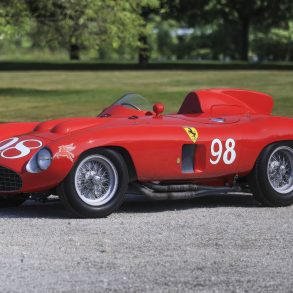
Formula One teams typically identify the chassis with a progressive number for each single-seater model’s chassis on the track during the season, starting with a new series the following year. For example, McLaren’s 2010 F1 car is named MP4/25, chassis number 1, 2 and 3, while their 2009 F1 car was named MP4/24, chassis number 1, 2, 3, etc.
Scuderia Ferrari applied this method for the first 20 years of its participation in the F1 Championship, but decided to change this approach in 1970 with the 312 B, identifying the chassis with progressive numbers that did not interrupt the series at the end of the model’s lifespan. Therefore, chassis number 1 was a 1970 Ferrari 312 B and that same chassis series continues to today’s F10, chassis number 282 that Massa debuted in Spain.
The 1970 Ferrari 312 B chassis number 1 was used in seven races – one of them in 1971, always with Jacky Ickx behind the wheel, except on one occasion (Germany 1970), when the Swiss Clay Regazzoni drove the car. Chassis number 1 was driven to one victory at the Austrian GP (Österreichring on 18 August) and a third place in the Netherlands in Zandvoort on 21 June in the same year. In both GPs that the car gained a place on the podium, Ickx also drove the fastest race lap, while between these two races the car started from the pole position at the French GP in Clermont-Ferrand on 4 July, also with the Belgian driver behind the wheel.
[Source: Ferrari SpA]








